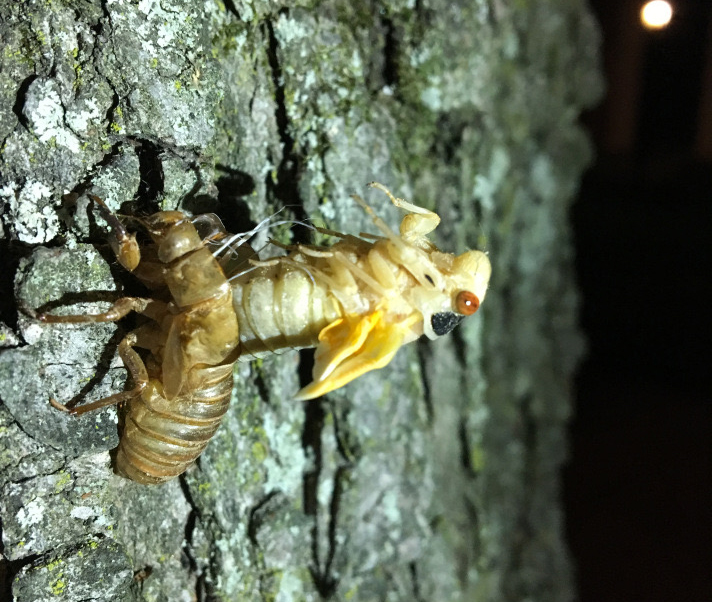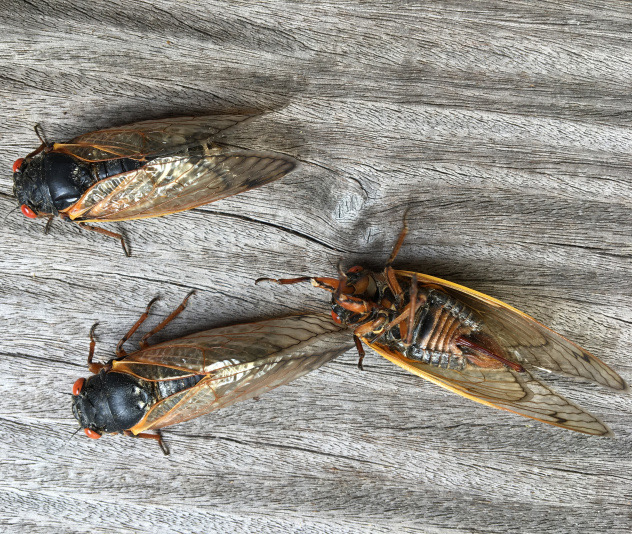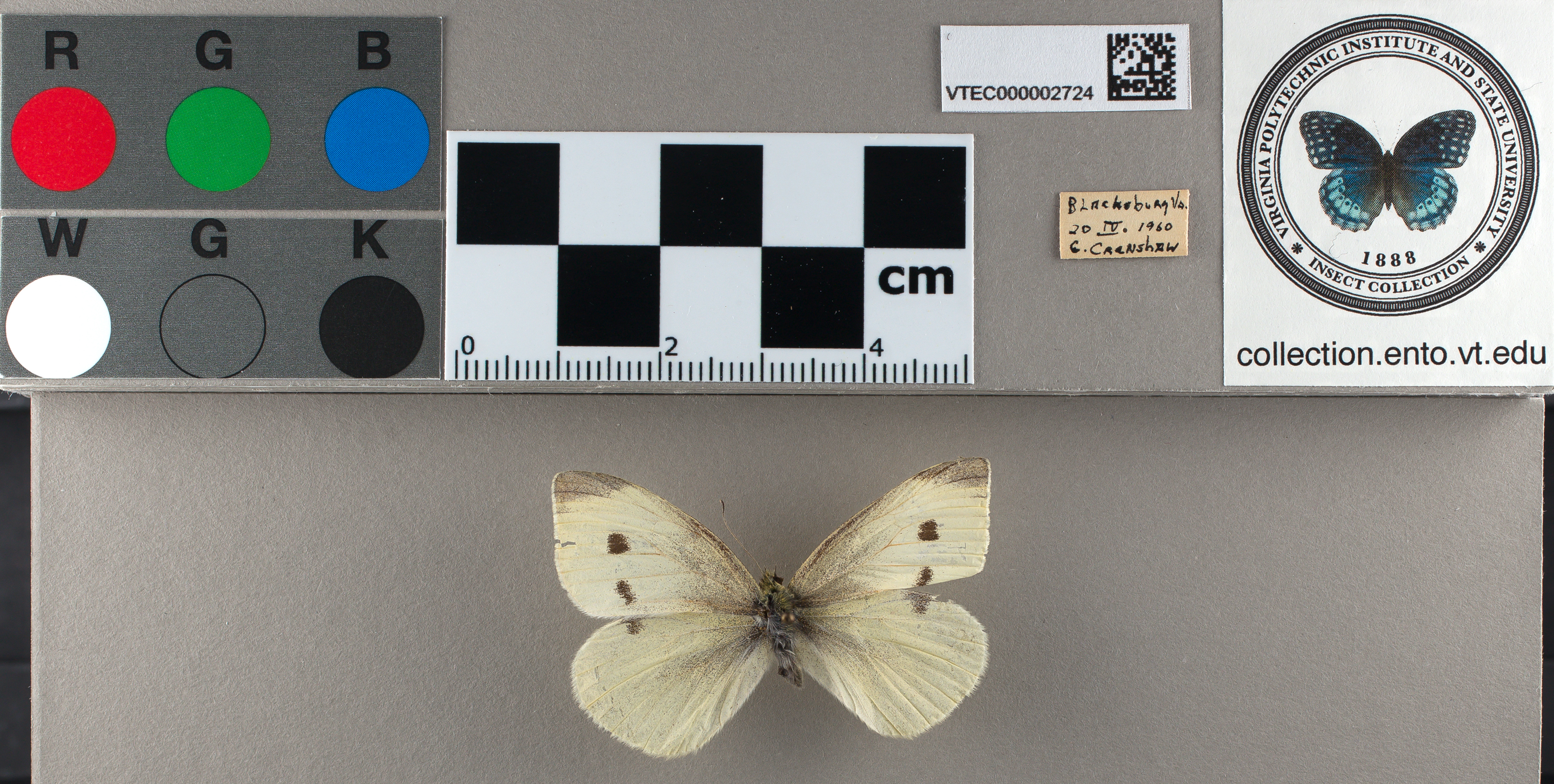After 17 years underground, Brood X cicadas will emerge from the soil next month—blanketing forests and tree-lined neighborhood streets across the Eastern United States. This once-in-a-generation ecological event is a rare opportunity for George Washington University researchers to study these harmless insects.
John Lill, chair of the Columbian College of Arts and Sciences’ Department of Biological Sciences, researches the ecology and evolution of plant-herbivore interactions. Working with GW postdoctoral scientist Zoe Getman-Pickering and other collaborators, he is looking forward to testing some fundamental hypotheses about how trophic cascades—an ecological phenomenon triggered by the addition or removal of a species in an ecosystem— operate in Eastern forests.
"We will be testing whether the massive pulse of cicada biomass, which will become the 'blue plate special' for an array of insectivorous animals, alters the diets and foraging behaviors of local insectivorous birds,” he said. “We predict that at least some species of common birds will forage less on their typical prey—caterpillars and sawflies that feed on trees—when cicadas are readily available.
"If this 'ecological release' occurs, we predict that more caterpillars and sawflies will survive, resulting in greater amounts of leaf damage and possibly reduced growth of local trees during emergence years."
The team began collecting data on bird predation of caterpillars and leaf damage during the spring and summer of 2020. They will continue data collection this summer, during and after the Brood X emergence, and for several years following the emergence. Dr. Lill hopes this research will fill gaps in scientific understanding of how periodical cicadas impact local communities and ecosystems.
Dr. Lill shared the truth behind several common myths about cicadas, and explained why researchers want to encourage the public to greet the emerging insects with a source of “wonder, delight and curiosity” instead of fear.

The nymph, soft and pale when it first emerges, extricates itself from its old shell. While the cicada is in this stage it is called a teneral. (Photo: Martha Weiss)

Adult cicadas take on the black and orange look seen here as they mature, however, awkward young cicadas often fall and flip themselves over. (Photo: Martha Weiss)
Myth: Periodical cicadas are invasive
Fact: This natural phenomenon is often sensationalized as an “invasion of cicadas,” implying they are coming from somewhere else. However, periodical cicadas are native to most of eastern North America, and only to eastern North America—they occur nowhere else in the world.
The individual cicadas you will see emerging from the soil this spring have been living directly beneath our feet for the last 17 years. According to evolutionary biologists, periodical cicadas have been living here for at least 500,000 years.
Myth: Periodical cicadas harm people
Fact: Cicadas of all sorts lack the ability to sting, bite or harm people in any significant way. They can be gently handled by adults and children without any significant health risks. They might buzz in alarm, which is their only real defense—apart from their massive numbers—but that will not hurt you.
They tend to be clumsy and might startle people if they fly suddenly or bump into you, but are totally harmless to both people and animals. Many dogs and cats may eat cicadas, and a few won’t hurt the pets, but consuming too many can lead to constipation or digestive issues.
Myth: Periodical cicadas are a type of locust
Fact: Periodical cicadas are not locusts. Seeing a massive emergence, early colonists mistook these insects for locusts, likely the migratory locust, Locusta migratoria, which can also appear in large numbers and damage crops. Periodical cicadas do not feed on crops and they do not migrate. They also have two sets of clear, membranous wings and sucking mouthparts, whereas locusts have leathery wings and chewing mouthparts.
Myth: Periodical cicadas harm the environment
Fact: While periodical cicadas are herbivores, meaning the nymphs feed on plants, they are not known to kill the woody plants that serve as their hosts and do not appear to transmit any plant diseases. Immature cicada nymphs live underground, alone, each in its own small chamber, where they use their sucking mouthparts to feed on fluids from the roots of trees—but do not seem to harm the tree in doing so.
As adults, the female cicadas can cause minor damage to the twigs of trees and shrubs where they lay their eggs, but except for small saplings, most trees suffer little lasting harm. Cicadas are a popular food source that often results in strong positive effects on local animal and plant populations. Many animals eat them as a nutritious food item while many plants, fungi and microbes absorb the nutrients from their decaying bodies after they die.
Myth: Periodical cicada emergences are made up of one species
Fact: Our brood of cicadas, Brood X, consists of three different species, Magicicada septendecim, Magicicada cassinii, and Magicicada septendecula, all of which are synchronized to emerge at the same time. They look superficially similar, but can be distinguished by their size, color patterns and calls.



